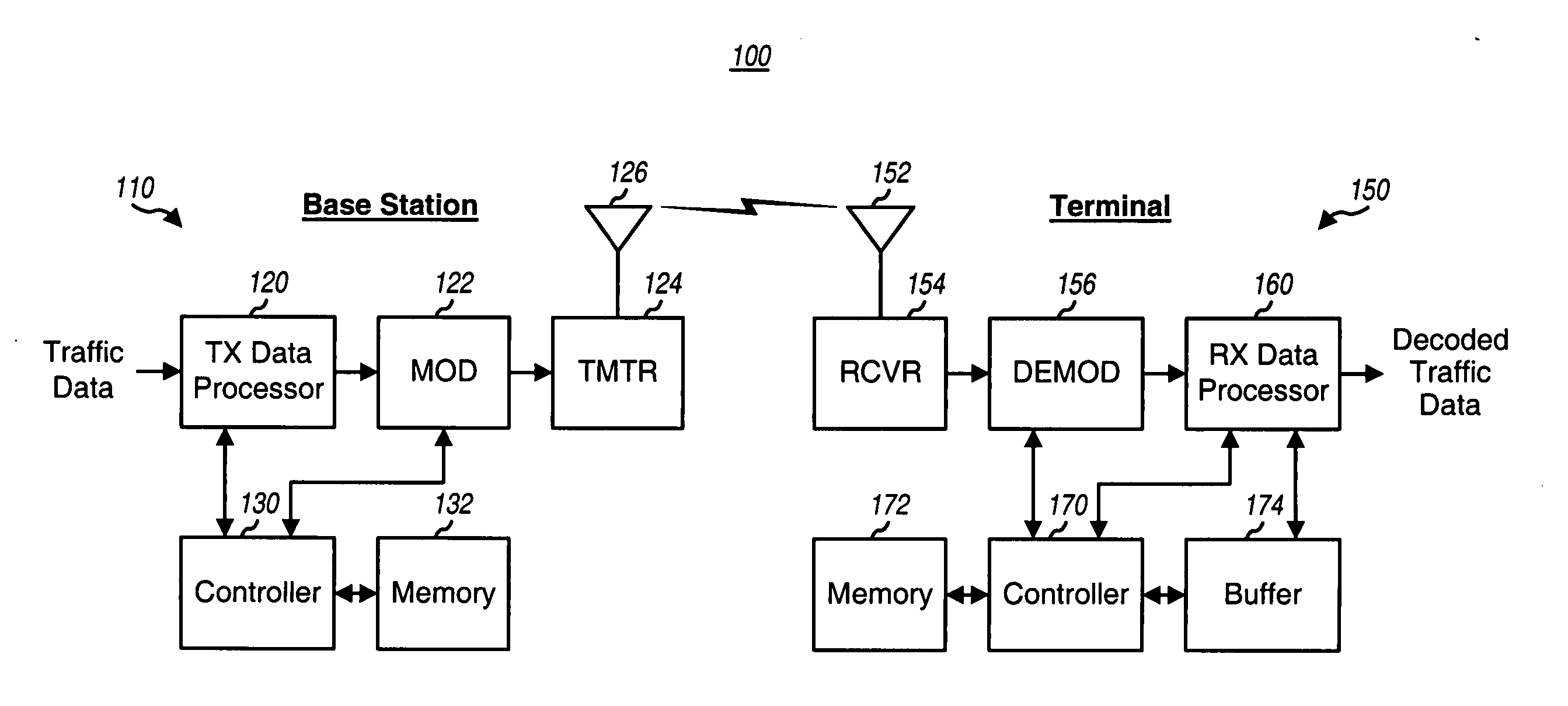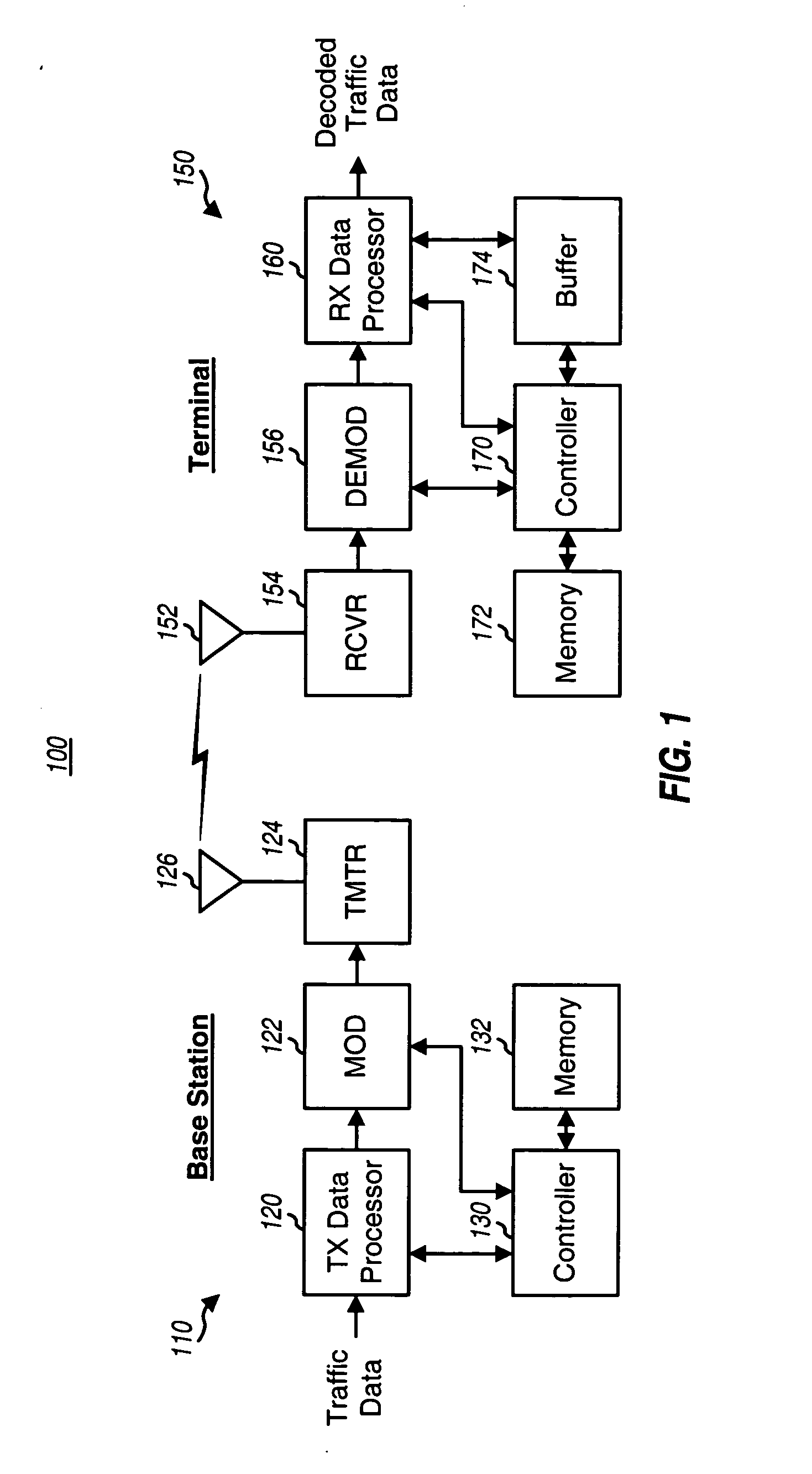Scaling and quantizing soft-decision metrics for decoding
- Summary
- Abstract
- Description
- Claims
- Application Information
AI Technical Summary
Benefits of technology
Problems solved by technology
Method used
Image
Examples
Embodiment Construction
The word “exemplary” is used herein to mean “serving as an example, instance, or illustration.” Any embodiment or design described herein as “exemplary” is not necessarily to be construed as preferred or advantageous over other embodiments or designs.
The techniques described herein for scaling, quantizing, and rescaling soft metrics may be used for various wireless communication systems in which a data packet for a message is divided it into multiple blocks and each transmitted block may face different channel condition. For example, these techniques may be used for a Time Division Multiple Access (TDMA) system, a Code Division Multiple Access (CDMA) system, a Frequency Division Multiple Access (FDMA) system, an orthogonal frequency division multiplexing (OFDM) based system, and so on. A TDMA system may implement one or more TDMA standards such as Global System for Mobile Communications (GSM). A CDMA system may implement one or more CDMA standards such as Wideband CDMA (W-CDMA), ...
PUM
 Login to View More
Login to View More Abstract
Description
Claims
Application Information
 Login to View More
Login to View More - R&D
- Intellectual Property
- Life Sciences
- Materials
- Tech Scout
- Unparalleled Data Quality
- Higher Quality Content
- 60% Fewer Hallucinations
Browse by: Latest US Patents, China's latest patents, Technical Efficacy Thesaurus, Application Domain, Technology Topic, Popular Technical Reports.
© 2025 PatSnap. All rights reserved.Legal|Privacy policy|Modern Slavery Act Transparency Statement|Sitemap|About US| Contact US: help@patsnap.com



